111 years is not a long period in world history. And yet, it's enough time to forget about people, even those who seemed closest. Moreover, it's a sufficient span to lose awareness that "life is not just black and white, it lives in many colors."[1].
"We use words like 'homeland', 'motherland', 'ancestry', 'ancestors', 'heritage', and many similar terms to emphasize respect for our past and legacy. There is no doubt that one of the needs of a significant portion of society is to place oneself as a continuation of something that has lasted for centuries. Hence the popularity of the term 'nation' and the cultivation of the language of the country or region we come from.
At the same time, it is common for us to significantly narrow down our perception of our history, often even settling it in our imagination. Each of us realizes that we came into the world with the help of two people - a father and a mother. As children, we discover the dazzling truth - 'dad' and 'mom' also had their parents! If we were fortunate enough to know our grandparents, perhaps it occurred to us that there were people known as great-grandparents. However, at this stage, knowledge ends, we hit a glass ceiling, and enter the mirage of fantasies - we perceive earlier generations not as ancestors, but as so-called great ones - Queen Victoria, Isaac Newton, William Shakespeare or Sir William Wallace of Elerslie.
Is 111 years a lot or a little? That's exactly how much time has passed since the death of Gotthard Latzel. Was he someone famous, someone deserving of crowds? Was he "great"? No. He's one of those people nobody remembers today. I stumbled upon him by accident, in one of the official documents. Trying to break through the "glass ceiling" of my own origin, I began to dig and search with genuine curiosity for those who came before me. It took me about 5 years to gather materials based on which I briefly reconstructed Herr Latzel's life.
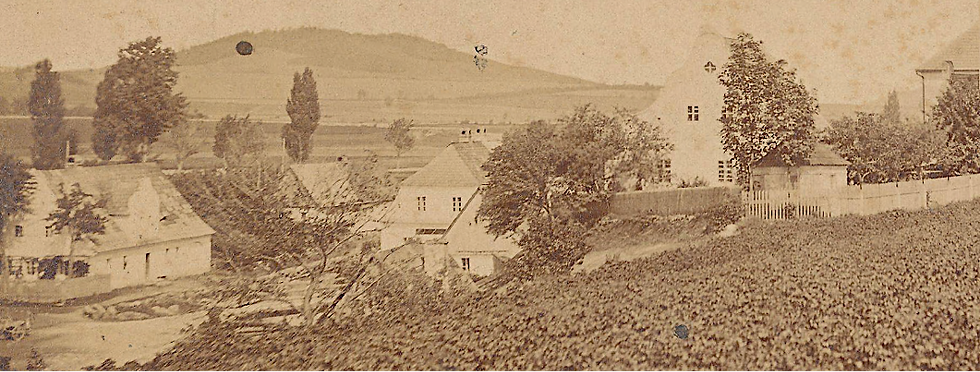
He was born on Sunday, May 12, 1844, in the village of Setzdorf in Austrian Silesia as the son of Florian and Paulina Latzel. He was the fourth child of his parents, although the fifth of his mother, who as a maiden gave birth to a daughter with an unknown suitor, probably from the surrounding area.

The house in which they grew up was located by the Weidenauer Wasser river, which surely lulled them to sleep every evening, flowing through the valleys of the impressive Reichensteiner Gebirge towards the Oder.
Childhood amidst the lush greenery of the mountains and crystal-clear water, from which one could drink without worry, must have been delightful. Siblings, several cousins, uncles, aunts, and grandfather Christoph Pohl (born in 1776), who lived a few houses up the river, surely provided a sense of security.
Life in Setzdorf was peaceful. The village was located about 12 kilometers from the town of Freiwaldau, which served as the district seat, housing both the court and the market. Children didn't venture there. Occasionally, the parents of the youngest Latzels harnessed the horse and set off on about an hour-long journey, heading for either smaller or larger markets, or for official matters - those that couldn't be settled with the local priest.
The year 1848 proved to be a turning point for most residents of this part of Europe. Although the Austrian-German border, near where the Latzels lived, had been prone to "fires" for many years, this time, justly on both sides of Silesia, a new "fire" was devouring equally - it was hunger.
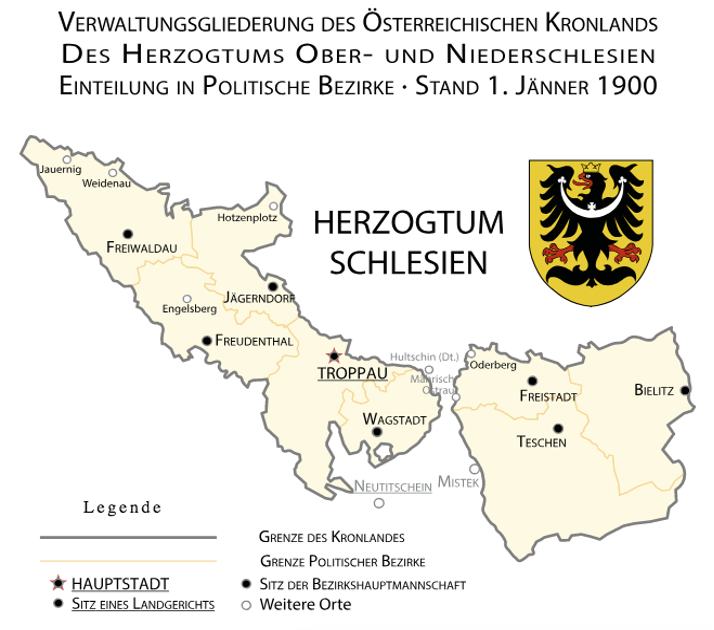
The disaster grew in strength, leading to riots. Some immediately sold their estates and fled "across the big water," while others demanded help from the authorities. As more and more people began losing loved ones due to malnutrition, frustration reached its peak. In the spring of 1848, numerous uprisings against the authorities occurred. Practically all of Central Europe was protesting. People demanded improved conditions, food, and influence on politics. Unable to cope with the situation, the ailing Emperor of Austria, Ferdinand I Habsburg, abdicated. The new monarch, Franz Josef, though only 18 years old, proved to be a wise and effective ruler. He pacified the crowds.
However, life in the Latzel household ceased to be idyllic. Gotthard's father, in order to save the family from hunger, sold the house by the river. He rented a room in the village center, where he moved with his wife and children. His profession - carpentry - ceased to bring in the income he desired in the face of crisis. They fell into poverty. Their emotional burden was further compounded by the death of 5-year-old Agnes, Gotthard's youngest sibling.
In 1855, Setzdorf was struck by a cholera epidemic. Eleven-year-old Gotthard witnessed how this unwanted guest visited hut after hut uninvited. Medics, with rags tied around their mouths, emerged one after another from each house, leaving behind widows, orphans, and mothers screaming with longing inside. Finally, he too understood the pain of losing loved ones. First, his father, and two weeks later, his eldest brother, left him forever.

Several years passed. Gotthard enlisted in the army. He was assigned to a unit stationed in Troppau, the capital of Austrian Silesia. He lived in a tenement house at Herrngasse 297. Moving from a mountain village to an elegant metropolis represented social advancement. Troppau was considered prestigious and wealthy. Ornate cafés, the smell of Meinl coffee, aromas of cakes and strudels wafting through the air, classical music by Viennese composers played in restaurants and ballrooms - all of this delighted the senses.
Shortly thereafter, he met Maria (born in 1841), three years his senior, the daughter of a shoemaker from Jablunkau. Although Gotthard typically spoke the Silesian dialect of the German language, known as Glätzisch (listen to how this dialect sounded by playing the recording attached to the article), and Maria spoke the Silesian dialect of the Polish language, known as the Jabłonków dialect, classical German, which was known to most Silesians at that time, helped them express their love for each other.
They married on October 21, 1871, in Teschen, in the eastern part of Austrian Silesia. Their witness, signed in the parish registers of the Church of St. Mary Magdalene, was Rudolf Ritter von Walcher (born in 1840), an engineer and inventor who contributed to the development of mining and rescue systems. The young couple, after their marriage, made their home on the outskirts of Troppau, where their firstborn, Carl, was born in early 1873. Although it might have seemed that their life would be stable, and the hardships of the past were behind Gotthard, another black day came. The boy passed away at the age of just 1.5 years.

The pain and suffering after the loss of their child prompted the Latzels to leave the city. They moved to where Maria came from – Jablunkau. They lived together with her parents, Ignatz (born in 1816), Maria Senior (born in 1819), and the rest of their children. Although this change certainly couldn't completely ease the pain of losing a child, they spent time with their loved ones, which provided some stability. Gotthard got a job at the local court, and shortly thereafter, Rudolf Franz was born (born in 1875). The era of industrial development began to be noticeable at every turn. Newspapers were reporting on the first telephone conversation, which took place on March 10, 1876. The world was becoming increasingly surprising and modern.
In 1877, another son of Gotthard and Maria was born - Maximilian. The family was growing. Maria's sister, Josepha, married Franz Speil, and Ignatz Junior married Johanna Wurm - they all lived close to each other. The squares and streets of Jablunkau buzzed with this family. Meanwhile, Maria Latzel became pregnant again - they were expecting Ludwig to be born.
The year 1879 arrived. Another epidemic struck. Black mourning clothes became the most frequently worn attire by the locals. The Latzel's home was not spared either. First, Maximilian, barely over a year old, passed away. In October, 4-year-old Rudolf died, and two weeks later, 4-month-old Ludwig. Gotthard and Maria lost all their children. This year was etched in their memory as the most tragic. Once bustling and full of children's laughter, the house was now filled with silence. In the evenings, only sobs could be heard.
The following year, Maria became pregnant for the fifth time. This child seemed to be the 39-year-old's last chance for offspring. Fortunately, the boy was born healthy. They named him after the reigning emperor - Franz Josef. However, Gotthard decided to take matters into his own hands. Together with his wife, they decided to leave Jablunkau. They chose to return to Teschen (now Cieszyn in Poland and Český Těšín in Czechia), where they got married. The town had around 20,000 inhabitants at that time.
They settled at Jablunkauerstrasse 7, on the premises of the Kohn bentwood furniture factory, where Latzel found employment as a gatekeeper. The standard workday was 10.5 hours for six days a week. The boy grew up, and Maria devoted all her attention to him.
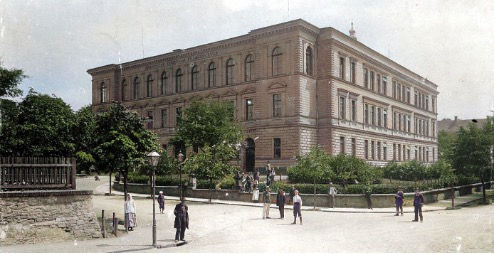
When the boy was six years old, a new stage began in his life. In 1886, he started his education at the German Städtische Volksschule. At that time, compulsory schooling lasted from the age of six to twelve, after which the child was required to complete vocational training within two years. This was exactly what happened in Franz Josef's case. Gotthard and Maria ensured that he received a thorough education, not only in terms of vocational training but also in language. The boy mastered both German and Polish.
Time marched on. The year 1888 became significant for the city due to the opening of a new railway line, the Schlesischen und Galizischen Stadtebahnlinie (Silesian and Galician Urban Railway Line), which ran from Kojetein in Moravia to Bielitz in Silesia (later extended to Kalwaria Zebrzydowska in Galicia). The following year, a new railway station was built in Teschen, further elevating the city's status.
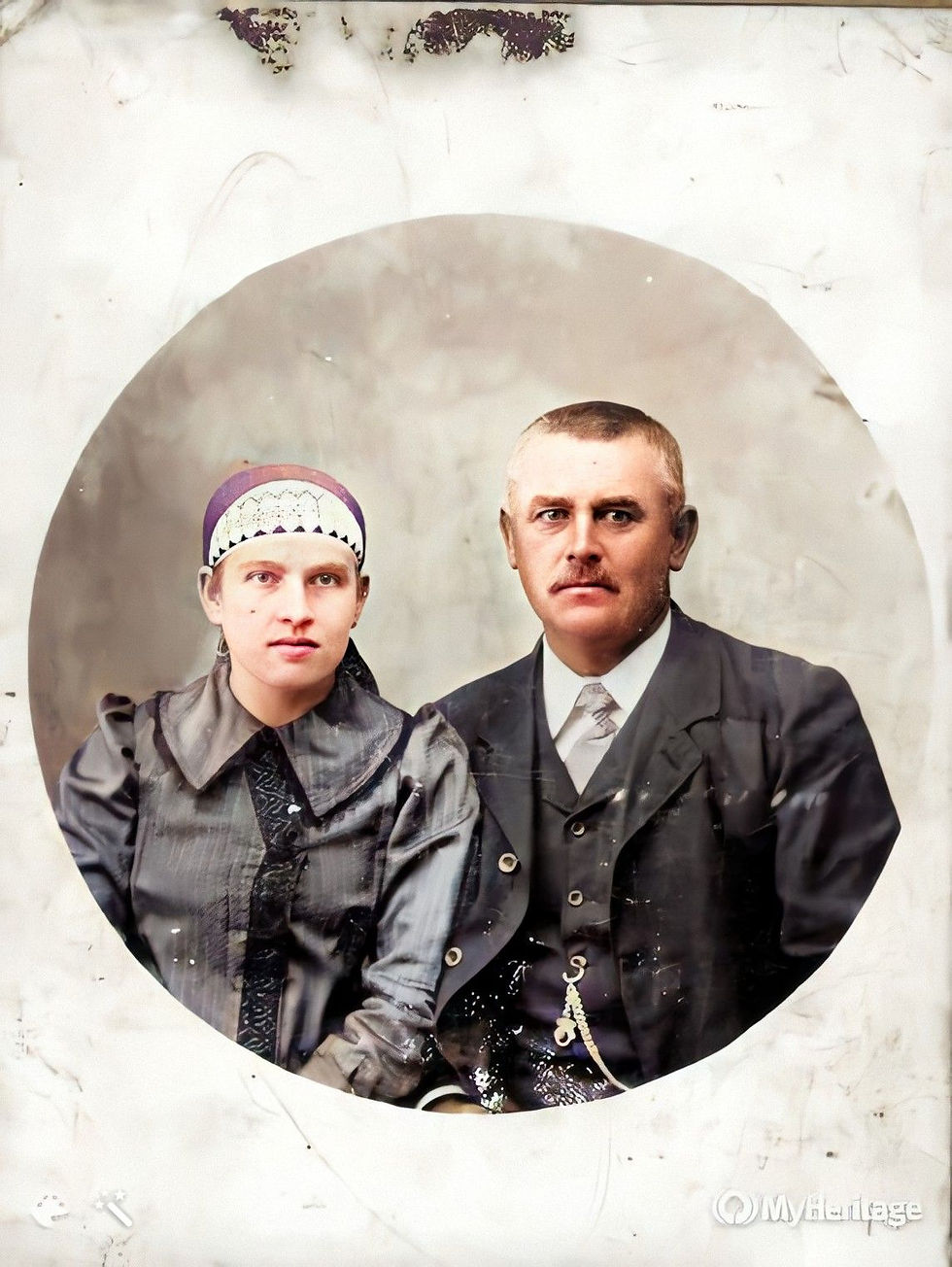
It was only in Teschen that their life stabilized. Although the hardships of daily life did not bypass this family, they had their trio, stable jobs, health, and a cozy home. They watched as their only child grew up, eventually becoming independent. They certainly visited Jablunkau, where Maria's siblings lived, as well as Setzdorf, where Gotthard had a large family.
Finally, in April 1904, Maria lost her battle with pneumonia. She had been with Gotthard for 33 years. During this time, they became parents to 5 boys, of whom they lost four. Maria was laid to rest in the municipal cemetery in Teschen (sector III, row 9, number 5).
Shortly thereafter, 24-year-old Franz Josef left home. He married Maria Gawlas (born in 1877) from Gross-Gurek (now Górki Wielkie), the daughter of Adam and Eva Gawlas. Although Gotthard was left alone, it was certainly a great joy for him to have two granddaughters - Paulina (born in 1905) and Maria (born in 1906) - and grandson Karl (born in 1910). The elder was named after Gotthard's mother, while the younger after his wife and also his mother-in-law. This custom persisted in Silesia for many years.
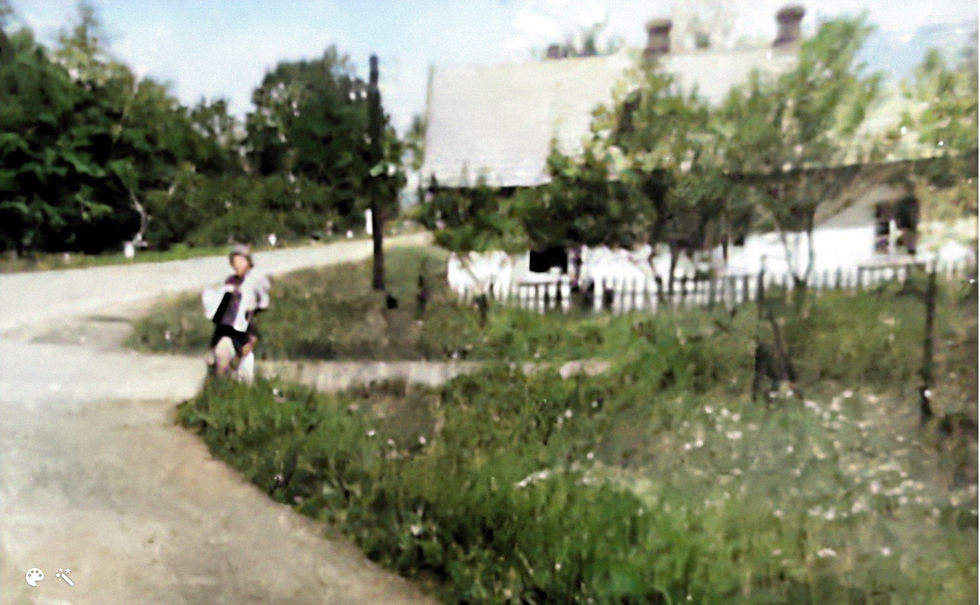
In 1909, he retired. He lost the opportunity to continue using the company apartment. At his son's request, he moved in with his in-laws (Adam and Eva Gawlas) in Górki Wielkie (house number 92), right on the border with the Pogórze region. He spent the rest of his life in this place. He was not remarkable. He was not recorded in any encyclopedia. He experienced in life the sufferings and joys like many of us.

His story was brought to life only in 2020 when I unearthed a few facts about him. He also received his place in the book "Nonkonformista" published in 2022, becoming a friend of the main character, Paul Juroschek
.
How long does it take to forget about our ancestors? Where does the actual understanding of words like "homeland", "ancestry", "lineage", "forebears", "heritage", and many others, which we repeat to emphasize respect for our past and legacy, end? How often do we significantly narrow our perception of our history, even imagining those who came before us? For many years, I myself was convinced (unconsciously) that my heritage was homogeneous. Unknowingly, I did not allow Gotthard Latzel and therefore his ancestors to be part of my perception of my own origin. And yet they were flesh and blood people, whose existence is a fact. Where did this ignorance come from? From ignorance itself. From imagination. From clinging stubbornly to only one perspective - a very limited one.
Gotthard Latzel, a German-speaking Silesian from Setzdorf, a resident of Jablunkau and Cieszyn, deceased and buried in Górki Wielkie. My great-great-grandfather. The direct ancestor of 166 currently living residents of Istebna, Jaworzynka, Koniaków, Wisła, Ustroń, Trzyniec, Cieszyn, Český Těšín, Karviná, Skoczów, Iskrzyczyn, Simoradz, Brenna, Puńcow, Sól, Kamesznica, Kraków, Katowice, Warsaw, Düsseldorf, Hamburg, Neuss, Montreal, Bromola, Częstochowa, Ostrava, Prague, Leicester, Philippsburg, and many other cities impossible to list.
It took only 111 years from the day of his death, from March 1, 1912, to be forgotten. Who are your ancestors? What diversity was among them that you do not know about? How many languages they spoke daily that you have no idea about?
Author: Jonasz Milewski
P.s. Learn more about the novel "Nonkonformista," which is set in Austrian Silesia at the beginning of the 20th century (book available only in Polish)
[1] Jonasz Milewski, Nonkonformista (wydanie I; 2022), strona 233

Comments